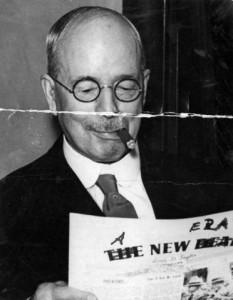The goal of a close reading is to produce a convincing and thorough interpretation of a text. Even straightforward prose can contain a trove of literary devices and strategies to either guide the reader toward meaning or obfuscate meaning altogether. While close reading, it is not only important to understand what authors are saying, but also, how they are saying it.
Understanding the form of the text is the first step of close reading. It will lead you to consider the content of the text in different ways.
When we consider prose, we must first consider which style of prose we are reading. Fiction can be short or long, from short stories to novels. Creative non-fiction can be a whole book or simply an article; scholarly articles have an entirely different tone and set of devices; journalism possesses its own set of conventions and structures; and prose poetry can look like a short story, but it certainly isn’t! Understanding the form of the text is the first step of close reading. It will lead you to consider the content of the text in different ways.
Fiction
Of all types of prose, fiction is most commonly associated with literary imagination. Though this form of prose often imagines people and events, it can also reimagine history, taking historical figures, or even the author’s own personal history, through a process of reinvention.
The result is most often a linear narrative, with its main building blocks—characters, setting, and plot—developing as the author chooses. However, some fiction is non-linear, offering impressions rather than plot development or jumping forward and backward in time. Many contemporary novels, for instance, choose to re-write history by re-writing the apparatus of storytelling altogether. Nevertheless, fiction is prose geared toward the imaginary, regardless of its form.
Creative Non-Fiction
Take the devices and form of fiction, but describe factually accurate events, and you have creative non-fiction. This type of prose often reads like literary fiction, but develops a factual story by using real events. Of course, any form of writing contains and expresses the bias of the writer, but the ideal ethic of creative non-fiction prose is to adhere as closely as possible to factual accuracy, while presenting the narrative in a creative way.
For instance, P.K. Page’s Extracts from a Brazilian Journal
reads as a story, though it is essentially creative descriptions of her actual travels in Brazil.
Journal Articles
Articles published in scholarly journals possess their own form and structure. This form of prose lays out an interpretation of a text, offers a close reading, and puts forward an argument. However, when reading articles, it is still important to read for bias, for gaps in the author’s argument, and to analyze how authors reach their interpretations.
Reading scholarly articles is much like assessing another detective’s work. It is important to close read for the main argument, or thesis, and to weigh the author’s supporting points and references in order to understand the interpretation. Some scholarly articles, especially those that deal with philosophy, may follow lines of logic that must be meticulously close-read in order to be understood. A thorough literary scholar will offer examples, quotes, and references to elucidate their position, and as a close reader, you must be able to weigh the effectiveness of their arguments in terms of their overarching goal, or main argument.
Book Reviews

Newspapers: a crucial source of book reviews and journalism.
City of Vancouver Archives: AM1477-1-S2. CVA 1477-83.
Book reviews give an informed opinion of a literary work or works in comparison for readers to assess and consider. They come in at least two forms: scholarly and popular.
Scholarly reviews, such as those published in Canadian Literature, seek to present a balanced examination of a book, offering a type of critical summary and placing a text in intellectual context. While still an opinion piece, the reviewer has more rigorous requirements. These reviews give a comprehensive overview of the publication and how the various parts work (or don’t) within it, nesting commentary about the strengths and weaknesses of the text within this overview.
Popular reviews appear in many newspapers, magazines, and websites, and aim for a mainstream audience of book readers and buyers. Popular reviewers do not tend to assess works in the same way as academic reviewers. They vary widely. Some focus on plot summary, while others engage texts more critically.
Journalism
Journalism differs from scholarly articles in its scope, its references, and style. While scholarly articles often utilize a more formal tone, journalism seeks to be as concise as possible, and to either report information, contextualize it with facts, or offer the author’s opinion. Though this style of prose varies greatly depending on the writer, the publication, and the topic, it is most commonly associated with reportage, factual documentation of events and burgeoning histories, and discussions of public opinion.
Works Cited
- Page, P.K.
Extracts from a Brazilian Journal.
Canadian Literature 90 (1981): 40–59. Print. (PDF)








 ©
©